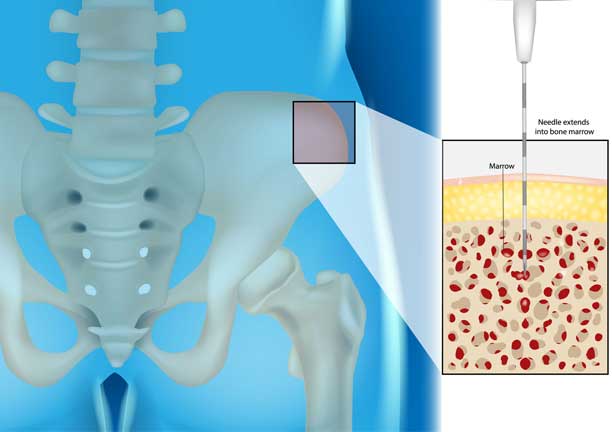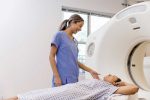Let’s say you tore a ligament skiing or have just undergone a procedure to repair torn cartilage, you might have a touch of arthritis in your shoulder that is bothering you. Your doctor may recommend a procedure called BMAC or Bone Marrow Aspirate Stem Cell Concentrate treatment to help the healing process along. It sounds a little wordy, but it just might be the last piece of the puzzle in overcoming an injury.
What is BMAC?
By now, many people have some awareness that the medical world is able to use the body’s bone marrow to harvest stem cells, which can be used in specific ways to heal the body. One such element is Bone Marrow Aspirate Stem Cell Concentrate (BMAC), which is a component of your bone marrow that contains growth factors and anti-inflammatory proteins, which have been shown to promote bone and soft tissue healing as well as reduce symptoms of pain related to injuries, tendinitis and arthritis.
What injuries can be helped by Bone Marrow Aspirate Cell Concentrate treatment?
Chronically painful areas of the body often do not have adequate blood supply, healing potential, and regenerative cells to repair the damage. That’s where BMAC is highly useful. BMAC, applied to the right area, can provide a rich supply of regenerative cells with the ability to replicate into various types of tissue. It has tremendous potential for patients with moderate to severe orthopedic conditions or injuries, and is often used to treat severe arthritis in the shoulder, knee, and hip.
How is BMAC treatment performed?
This procedure is typically done under anesthesia and consists of simple needle punctures to the affected joint. Stem cells are collected from the bone marrow by inserting a needle into the intramedullary (innermost) space of the bone. The aspirated blood is then centrifuged to concentrate the growth factors and healing agents. This compound, called bone marrow aspirate concentrate (BMAC), can then be injected into the patient’s damaged areas where the stem cells can begin to promote healing.
How long will I need to recover from a BMAC procedure?
There is minimal down time after a patient has a BMAC treatment. Patients may be sore in the injection site for two to three days. Patients are encouraged to follow up with physical therapy to support the healing process. Your physician will discuss follow up care with you prior to your procedure.
Who should consider BMAC treatment?
The best candidates for the use of BMAC treatments are patients with the following conditions:
- Tendinopathies (tennis elbow, golfer’s elbow, patellar tendinopathy, jumper’s knee)
- Muscle, tendon, or ligament tears
- Osteoarthritis in a knee, hip or shoulder joint
- Lumbar disc disease
- Damaged cartilage and bone within a joint
- Patients undergoing cartilage repair procedures (BMAC is often used as an adjunct for these repairs)
How do I know if BMAC treatment is right for me?
Your physician is the best resource for information about whether Bone Marrow Aspirate Stem Cell Concentrate treatment is an appropriate procedure for you. They will have seen your imaging exams, know your diagnosis, know the severity of it, and be able to determine if the regenerative and healing properties of stem cell treatment can address your particular issue. If you are diagnosed with an injury such as those listed above, you may ask your physician if BMAC treatment would be a good option for you.



















